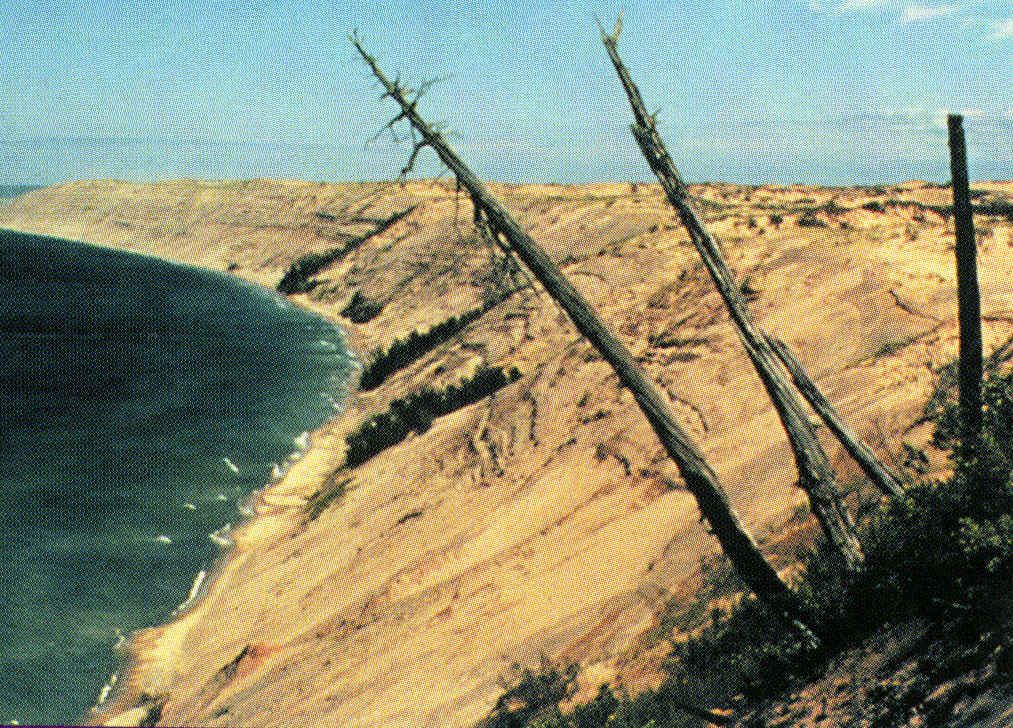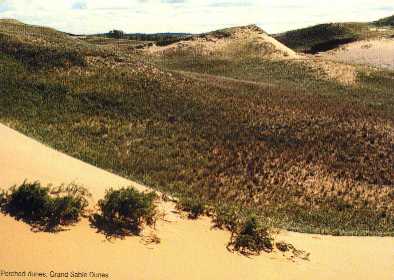Perched dunes lie atop a high bluff. Michigan's two major perched dune systems are at Sleeping Bear Dunes National Lakeshore, and near Grand Marais, at the Grand Sable dunes. Perched dunes form when lake levels are high. High waves erode the bluffs, leaving them exposed to the ravages of wind.

The wind blows sand grains off the bluff, onto the flat upland. The dunes are, therefore, perched on the top of the bluff.
Dune activity of this kind can be monitored by examining soils
buried in the dunes. During low water, the bluffs revegetate, and no sand is blown
onto the upland. Soils form on the dunes. When water levels in the lake rise,
bluffs eroded and the soils on the dunes above get buried by sand. Using radiocarbon
dating methods, we can determine when the soils were buried, and thus ascertain when the
lakes were high vs low.

Click here for full size (307 kb)

Click here for full size (410 kb)
This material has been compiled for educational use only, and may not be reproduced without permission. One copy may be printed for personal use. Please contact Randall Schaetzl (soils@msu.edu) for more information or permissions.